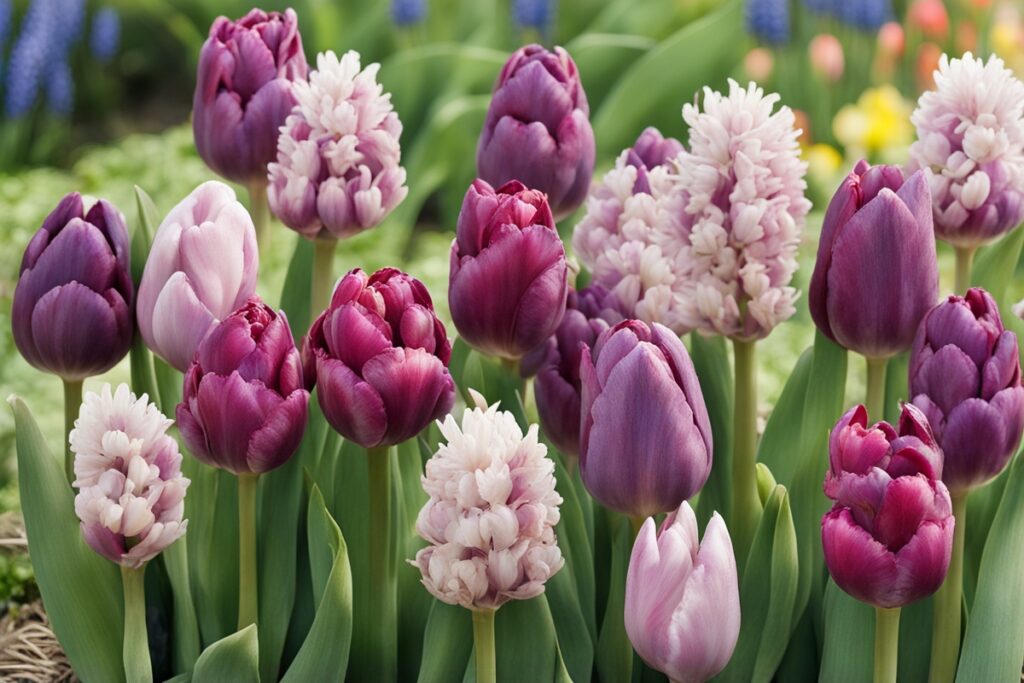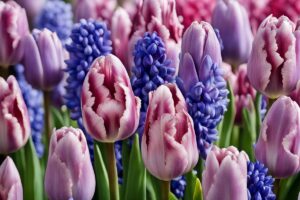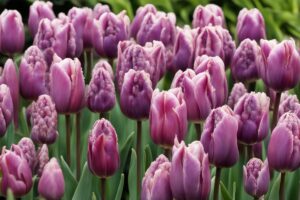Choosing the right hyacinth bulb colors can transform your garden into a vibrant masterpiece, a canvas of scents and shades that captures the essence of spring. If you’re anything like me, standing in front of a bulb catalog or a nursery display, you’ve probably felt that mix of excitement and indecision. How do you pick the perfect hue when every color seems to whisper promises of beauty? That’s where the art of selecting perfect hyacinth bulb colors comes in—a skill that blends personal taste with practical know-how. In this guide, I’ll walk you through everything you need to know to make informed choices, from understanding color symbolism to pairing shades with your garden’s vibe. Let’s dig in (pun intended) and unearth the secrets to creating a stunning hyacinth display!
Why Hyacinth Bulb Colors Matter More Than You Think
Hyacinths aren’t just flowers; they’re mood-setters. Their bold, fragrant blooms can evoke emotions, signal the season’s change, and even influence how people perceive your outdoor space. Imagine you’re hosting a spring brunch—don’t you think a bed of soft pink hyacinths would scream “welcome” more than a stark white patch? Color isn’t just aesthetic; it’s a language. According to horticultural studies from places like the Royal Horticultural Society, color in garden design impacts psychological well-being, with warmer tones like red and orange energizing viewers, while cooler blues and purples soothe the soul. When selecting perfect hyacinth bulb colors, you’re not just planting bulbs; you’re crafting an experience.
Beyond mood, color choice affects practicality. Darker shades, like deep purple or indigo, can absorb more heat, potentially speeding up growth in cooler climates but risking stress in hotter zones. Lighter colors, on the other hand, reflect sunlight, keeping bulbs cooler. I learned this the hard way a few seasons ago when my deep blue hyacinths in a sunny Texas plot started wilting faster than expected. Lesson learned: know your climate, and let it guide your palette.
Understanding the Hyacinth Color Spectrum
Hyacinths come in a dazzling array of colors, from classic blues and purples to vibrant pinks, reds, whites, and even yellows. Each shade carries its own charm and cultural weight. Blue hyacinths, often seen as the quintessential variety, symbolize sincerity and peace—perfect for a tranquil garden corner. Pink blooms whisper romance, while red ones shout passion, though they’re rarer and harder to source. White hyacinths, with their clean elegance, often represent purity, making them a go-to for formal designs or wedding-inspired landscapes.
Yellow hyacinths? They’re the underdogs, often overlooked but brimming with cheer. I remember planting a cluster of ‘Yellow Queen’ bulbs near my patio a few years back, and every morning, their sunny glow felt like a personal “good morning” from nature. If you’re selecting perfect hyacinth bulb colors, don’t shy away from mixing lesser-known shades with classics. Variety isn’t just the spice of life—it’s the heartbeat of a dynamic garden.
How to Match Hyacinth Colors to Your Garden’s Theme
Your garden likely has a personality, whether it’s a wild cottage vibe, a sleek modern look, or a whimsical fairy-tale feel. Matching hyacinth colors to that theme is key to a cohesive design. Got a minimalist space with clean lines and neutral tones? Stick to whites or soft blues like ‘Delft Blue’ for understated elegance. If your yard bursts with eclectic energy, why not go bold with a mix of ‘Woodstock’ (a striking purple) and ‘Gipsy Queen’ (a peachy salmon)?
Consider companion planting, too. Hyacinths pair beautifully with tulips and daffodils, so think about complementary colors. A trick I’ve used is planting purple hyacinths alongside yellow daffodils for a classic contrast that pops. Check your garden’s light and soil conditions as well—some colors, like deep reds, can fade in intense sun, losing their punch. The goal is harmony, not chaos, so sketch out a plan or even mock it up with colored pencils if you’re a visual thinker like me.
Seasonal and Emotional Impact of Hyacinth Colors
Hyacinths are synonymous with spring, a time of renewal and hope, and their colors can amplify that seasonal magic. Bright pinks and yellows scream “new beginnings,” making them ideal for early spring displays when you’re itching to shake off winter’s gloom. Deeper tones like indigo or burgundy, though, can add a touch of drama, especially if you’re aiming for a late-spring gothic vibe. Ever thought about how a single color can shift your mood? A study from Cornell University’s Cooperative Extension notes that exposure to floral colors can reduce stress levels by up to 20%, with pastels having the most calming effect.
Think about the emotional story you want to tell. For instance, after a tough year, I planted a border of ‘Blue Jacket’ hyacinths along my walkway. Their serene hue felt like a quiet promise that better days were ahead. When selecting perfect hyacinth bulb colors, ask yourself: What do I want to feel when I step outside? Let that guide your choice.
Practical Tips for Selecting and Planting Hyacinth Bulbs by Color
Now, let’s get down to brass tacks. Selecting perfect hyacinth bulb colors isn’t just about preference—it’s about strategy. First, source your bulbs from reputable nurseries or online retailers like DutchGrown or Breck’s, where color accuracy is guaranteed through catalog images and descriptions. I’ve been burned before by generic “mixed color” packs that turned out to be 90% white. Read reviews or ask for cultivar names to ensure you’re getting what you pay for.
When planting, group colors intentionally. Mass plantings of a single shade create bold impact, while mixing hues in clusters can mimic natural wildflower patches. Plant bulbs 6-8 inches deep in well-drained soil, ideally in fall, to give them a cold period for optimal blooming. And here’s a pro tip from my own trial and error: label your planting spots with stakes or a garden map. Come spring, you won’t be scratching your head wondering which color is where.
Don’t forget maintenance. Hyacinths can fade over seasons, especially vibrant reds and purples, so consider rotating colors or replenishing bulbs every 2-3 years. Mulch to retain moisture, and watch for pests like voles that might not care about your color scheme but will happily munch on your investment.
Balancing Personal Taste with Timeless Design Principles
At the end of the day, selecting perfect hyacinth bulb colors is a dance between what you love and what works. You might adore electric pink, but if your garden is a sea of cool tones, it could stick out like a sore thumb. Use the color wheel as a guide—analogous colors (like blue and purple) blend seamlessly, while complementary pairs (like yellow and violet) create striking contrast. I often lean on advice from landscape designers like those at the Missouri Botanical Garden, who emphasize balance over trend-chasing.
Still, don’t be afraid to break the rules. Gardening is personal. If a quirky combo of red and yellow hyacinths sparks joy for you, go for it. Just balance it with neutral elements like greenery or stone paths to avoid visual overload. Imagine you’re painting a picture—every color should have a purpose, but the canvas is yours to play with.
References
- Royal Horticultural Society – Growing Hyacinths
- Cornell University Cooperative Extension – Color and Mood in Gardening
- Missouri Botanical Garden – Hyacinth Color Design Tips
- University of Minnesota Extension – Growing Hyacinths
- Longwood Gardens – Hyacinths for Spring Color
Disclaimer: This article is for informational purposes only, based on general research, personal experience, and insights gathered from reputable gardening resources. It is not intended to serve as a substitute for professional advice. Gardening conditions, bulb quality, and individual preferences can vary widely, so results may differ from those described. Always consult a qualified horticulturist, landscape designer, or local extension service for personalized guidance tailored to your specific climate, soil conditions, and garden goals. Your unique situation deserves expert attention to ensure the best outcomes for your hyacinth displays.
This content is for informational purposes only and not a substitute for professional advice.



